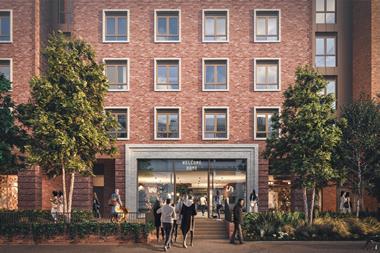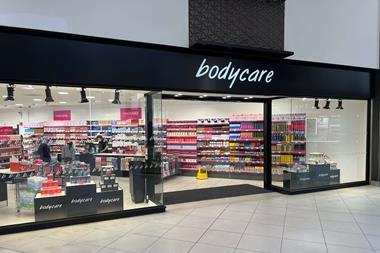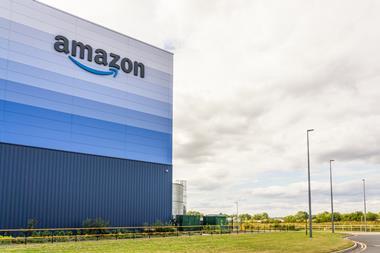The lack of movement at the top of this year’s retail parks table belies the fact that the market is going through some significant changes. While the table remains very similar to last year, there are forces at work that are altering the landscape for retailers and landlords in out-of-town parks. The effects may well become more obvious as 2008 progresses, but the market is evolving and it is unlikely that there will be any significant new entries until the turbulence has calmed down.
Indeed, this year’s table has only one new entry, Anglia Retail Park in Ipswich, which comes in at 96. The top ten in terms of square feet is unchanged apart from one big climber, with Castlepoint in Bournemouth holding on to the top spot at 645,000 sq ft (59,920 sq m), ahead of familiar names such as Middlebrook Retail & Leisure Park in Bolton, Fort Kinnaird in Edinburgh, Retail World in Rotherham and Clifton Moor in York.
The only big position jump is by Belfast’s Holywood Exchange, which saw the completion of the centre’s second phase of development, taking it to third place with an extra 310,000 sq ft (28,800 sq m). The retail parks market is being affected by factors largely out of the control of retailers and landlords, some of which did not exist a year ago. A sea change in the way government and local authorities think about retail development has shifted the onus to town centre schemes. And landlords have been planning for the effect of the changes to the empty property rate relief laws, which are due to come into effect on April 1.
The internet continues to plunder store sales and retail property directors are having to move fast to keep ahead. The outcome is likely to be at the expense of retail property, particularly the bulky goods sector, which has been hit hardest by the consumer downturn and seen a string of big-name retreats in the past year.
When troubled furnishings retailer Land of Leather announced in February that it would only open half as many stores this year as it did in 2007, it was yet more gloomy news for retail park landlords. Many are still struggling to fill the voids left by Courts and Allders, which collapsed as far back as 2005. So it is unsurprising that there are so few parks opening in the UK, as landlords struggle with too much space and weakening demand.
Also, landlords are being asked to provide smaller units. Industry experts estimate that the average amount of space required by retail park tenants has shrunk from 10,000 sq ft (930 sq m) to 7,500 sq ft (695 sq m) and is still falling. The challenge for landlords is to find ways to make the most of what they have. Redevelopment of sites will be the key priority for landlords as they attempt to create the right tenant mix with smaller units.
Savills national director of out-of-town retail Martin Supple says: “There is an ongoing need for retail park unit sizes to come down. If you’re a landlord and you’ve got a large box unit it’s very difficult to let in the current market. You’ll have to break it down if you’re going to cater for an ever-decreasing footprint demand.”
With no sign that the growth of online retail sales is levelling, the web will remain a key factor in property directors’ strategy. The exact effect on the market of retailers reorganising their portfolios to create a multichannel offer is still unclear, but the overall picture will not fill landlords with joy. Store closures are likely to follow as a result of the UK’s growing online shopping culture, particularly among bulky goods retailers, and the level of new signings is likely to stay stagnant.
“Retailers are faced with a difficult choice over where to invest their money,” says Verdict lead analyst Nick Gladding. “They will devote their time to developing their online offering and some will be cutting back on property. There’s a lot more they can do and they’re still on a steep learning curve.”
But, while the boom in online retail has had serious implications for the bulky goods market, fashion is looking far more robust. Rents for fashion retailers continue to rise, reflecting the healthy demand for space and with less of a culture for buying clothes online, the area looks set to remain strong.
A key shift in retail parks is likely to come in the type of food retailers taking units, according to Supple. He expects a wave of major national food retailers, such as Waitrose, Morrisons and new arrival Whole Foods Markets, to take large units of between 30,000 sq ft and 40,000 sq ft (2,785 sq m to 3,715 sq m) in retail parks.
“We’re going to see a shift, but it won’t be overnight,” says Supple. “We’ve gone high street, we’ve gone bulky. Now we need to go to local authorities and explain why entrants like Waitrose can fit into retail parks.”
Retail parks are taking a lot of heat. Landlords must now evolve their developments if they are to find themselves in demand again. This means adapting to a retail environment in which their tenants are looking for smaller units and more flexible leases. With leases in retail parks now typically lasting for 10 years rather than 15, landlords are in their weakest position for years.
But this does mean that the tenants that are expanding on retail parks are in the driving seat. And, having spent so many years on the back foot as the market explodes, this is a rare piece of good news for those retailers lucky enough to be in a position to grow.


























No comments yet